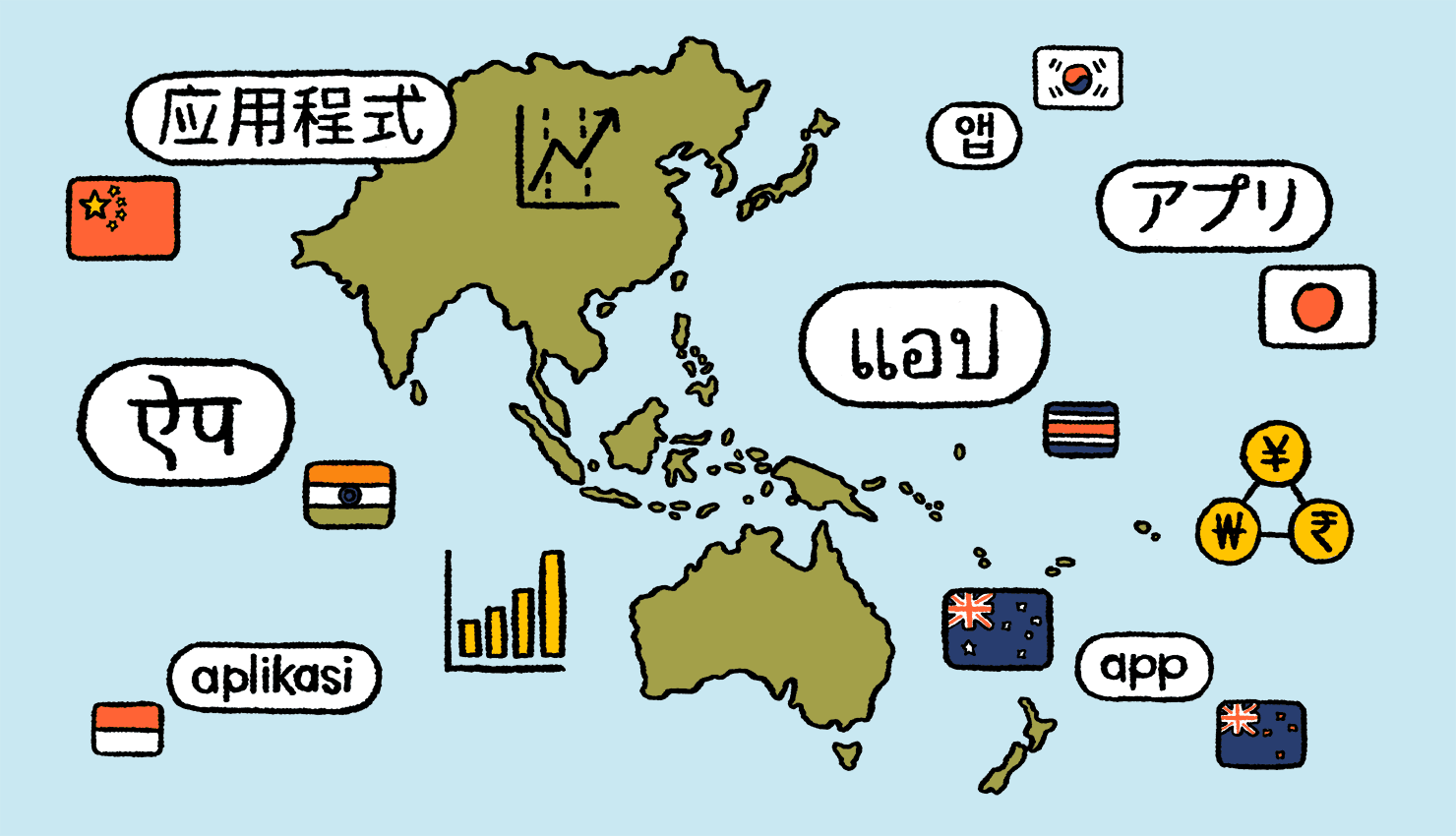We have become used to thinking that the West dominates the global economy. It’s imprinted in our collective perception of the world. But the tides are turning. With the growing population in Asia, the U.S. will not be a leading economic force for much longer. And, as the authors of the book “Factfulness” point out, the West is not fully aware of this fact:
In terms of economic muscles “we” are becoming the 20 percent, not the 80 percent. But many of “us” can’t fit these numbers into our nostalgic minds.
We talked about this with Yuka Nakasone, who is currently a Globalization and Localization Director at Intento.
With nearly 25 years of experience in a variety of positions, on both the client and vendor sides of the localization industry, Yuka became aware of the many aspects and layers of the localization world. She’s been kind enough to answer all our questions about localizing for the APAC region, providing frequent misconceptions companies have about international expansion, localization challenges, and more.
The value of expanding to the APAC region
The APAC region is home to 60% of the world’s population and its digital market is growing at an incredible pace. It includes both developing economies (e.g., China, India, Vietnam) and those categorized as developed economies (e.g., Japan and Australia).
Without a doubt, for those looking to expand internationally, entering the APAC region could be a great opportunity. As a matter of fact, the UNDP describes the Asia-Pacific region as the “most dynamic economy” marked by “sustained economic growth, investment, and trade”. The most attractive locations in the APAC region include Singapore, China, Japan, and South Korea.
Singapore – home to thousands of tech startups
Singapore has been particularly attractive to foreign businesses, both as a financial and a regional trading center. Due to its business-friendly policies and strategic location, it is considered to be a gateway to Asia and the most promising country for international expansion. In addition, it is listed as the most innovative country in Asia which certainly has something to do with the fact it’s home to over 4000 tech startups.
China – a blooming market
China and Hong Kong in particular, also stand out as great APAC region locations to consider for future expansions. Both places have impressive foreign direct investments (China even surpassed the U.S. by bringing in $163 billion in inflows last year), and a market size that still attracts foreign companies. According to Yuka:
“As China has become a first world economic power and India is gaining momentum, it’s a fact that the world economic center is shifting toward Asia."
"McKinsey claims in its publication in 2019 that “we need to stop talking about Asia as rising” and instead “ start asking ourselves how Asia is going to lead.” It seems Covid-19 has accelerated this process even more. Even if China stops being our factory, their population is large enough to keep their status and momentum going as number one.” says Yuka.
Japan - a key market for international business
There are various benefits of expanding your business to Japan, the world's third-largest economy. The good news is that it takes around two weeks to set up a business entity there. It is a highly developed, yet challenging market to enter.
Around 3-5% of people in Japan speak English. Consumers expect a localized shopping experience and they are very attentive to details when it comes to evaluating products and services they purchase.
Japanese is a highly “politeness-oriented” language with rich linguistic nuances and honorifics used to show respect. There is a specific etiquette for treating customers. Investing in personalization, building trust, and going the extra mile to show the customers you value them - is vital for success in Japan.
South Korea – the home of innovation
As for South Korea, it has been ranked number five by the World Bank when it comes to ease of doing business. The country is known for its rapid economic growth, which has a lot to do with the country’s strategic decision to spend the largest share of its GDP on R&D.
Make no mistake – the APAC region is not homogenous
Something that companies often overlook is the diversity of the APAC region. People have a cognitive tendency to group things that seem similar because they lack deeper knowledge about them. This makes them easier to comprehend. However, what we don’t know, we often misunderstand.
As a Globalization and Localization Director at Intento, Yuka is well aware of the challenges of expanding into the APAC region:
“Unlike European countries that share some cultural aspects or at least some characters, Asian countries have totally different languages and chances of penetration in the market without doing any localization is lower.”
The truth is, the APAC region is home to more than 3200 languages and dialects, not to mention incredibly rich traditions, histories, and cultures. There is no universal tip or a gimmick you can use to engage people across the entire region. In fact, it’s quite irrational to think that there is.
Yuka states:
“In my humble opinion, the APAC region should not be bundled geographically because of its diverse nature. If you group them in the conventional way, you must be aware that there are some radical differences from one country to another, and one culture to another.”
Localization for the APAC region is not a “nice to have”
Looking at the linguistic landscape of the APAC region, it is rather complex. English is widely spoken in India and Singapore because they are former British colonies. In other countries, you can spot the Western influence simply by looking at the culture. Australia and New Zealand are still a part of the British Commonwealth.
Still, it's a fallacy to believe language is irrelevant, especially for the APAC region.
“Unlike European countries that share some cultural or linguistic characteristics Asian countries are more diverse. Also, English is not as common as in the Transatlantic Axis, so the chances of market penetration without localization may be much lower when compared to European countries. And forget about expansion without a good localization strategy.” says Yuka.
English is still predominant in the global software industry, but this must change, Yuka maintains:
“I have often seen and heard that it’s enough to support English to go “global” because our product is “B2B SaaS.” You can replace “our product is B2B SaaS” with other phrases such as “most of the people in the world understand English” or “English is the common language in the world.”
"If you have a great product, you may be able to break the language barrier to get several great clients because of English savvy engineers on both ends, but when you really want to exploit a foreign market, that’s not enough. Not even for a SaaS company."
"There are many studies, but it’s somehow an automatic thought pattern that people worldwide have.” says Yuka.
Tips for localizing for the APAC region
There are many business challenges that companies typically face when it comes to managing a global expansion. Sometimes they lack a cohesive global marketing strategy, other times it’s about the lack of financial resources. Yuka also pointed out two significant shortcomings –insufficient knowledge and a shortage of expertise.
Companies are often stretched between preserving their brand identity and adapting to foreign markets. They are not quite certain how to approach the expansion strategically, which jeopardizes their international success. Overcoming this is possible if you surround yourself with a team of experts.
“One of the biggest challenges we face is that people simply don't know what they don't know. I have seen many companies try to deal with other markets outside their country without knowing there are professionals who can help to do it with already established technologies and knowledge."
"By leveraging globalization practices brought in by professionals, they can not only go faster but most likely they will save a good chunk of money by avoiding common pitfalls and mistakes.” says Yuka.
The person responsible for managing localization for the APAC region doesn’t have to be from that region – although it is recommended. However, as Yuka points out, this professional needs to know all about the product geo-fit:
“At the earliest stage of the product’s lifecycle, we must have an i18n savvy professional making sure the design of the product has appropriate global UI and UX. It is too late to wait and spot design errors in foreign cultures or markets. It requires much more effort, and thus money, to correct it in the translation or QA process.” maintains Yuka.
The feedback loop is also very important and that’s where local experts can help you out. In a nutshell, globalization practitioners bring efficiency to the process and ensure better end results.
Final thoughts on localization for the APAC region
There is no single right way to localize for the APAC region or a universal set of best practices for coordinating the localization process, according to Yuka:
“It depends on the size and type of the company. Even if it is ideal to do something a small startup is doing, it is usually impossible to do the same thing in an enterprise. It’s also unrealistic to bring the tools and human resources an enterprise has to a startup."
"In any case, I think what works best is to plan end-to-end automation and version control in a centralized manner, coupled with enhanced internal and external communication.”
Yuka believes localization will become less of a pain point in the future because of technological advancements.
“When I entered the localization industry, we were just starting to use CAT tools. Actually, International Communication, a Massachusetts-based MLV where I first worked, had a high school dropout, a genius engineer, next to the language groups, and we had been developing a CAT tool called ForeignDesk, which was renamed LionLinguist after it was bought out by Lionbridge.
Then, I saw the industry become structured and start to work like a machine. I am not sure if it will happen as fast, but the way people make use of foreign languages will change because of technological advancements. More options will be available to create multilingual content. Translation as we know it will remain but I see companies employing other ways of achieving the same goal: going global.” says Yuka.
-
We thank Yuka Nakasone for taking the time to share her experience and insights with us! Were any of the statements surprising to you? What topics would you like to further explore when it comes to localizing for the APAC market?
Let us know in the live chat or drop us a message on Twitter, LinkedIn, or Facebook.



